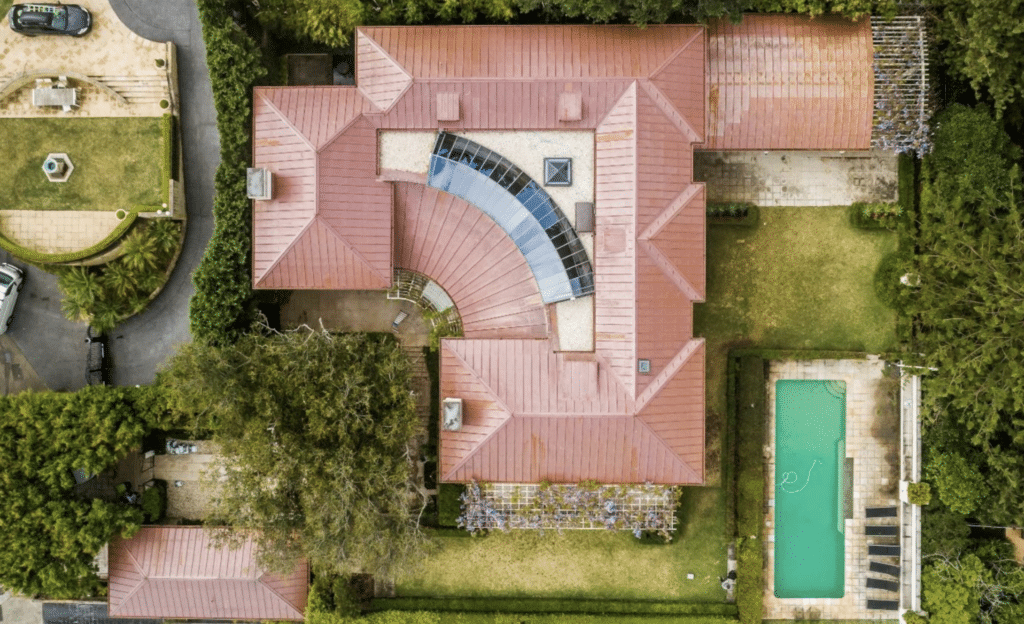Types of copper roofsThere is no doubt that copper is the premium roofing material, along with zinc cladding, as the best cladding products. It’s distinctive look attracts immediate attention meet most design requirements. There are several types of copper roofs, each with their own unique characteristics and benefits. Here are a few examples:
Each of these types of copper roofs has unique benefits and can be customized to fit the specific needs of the building or structure. Copper roofs are known for their longevity, durability, and resistance to corrosion, making them a popular choice for high-end residential and commercial properties.
What grade of copper roofing sheet is used?The most commonly used grade for copper cladding and roofing in Australia is C12200, Phosphorus Deoxidized (DHP) copper, which is a high-quality, commercial-grade copper that is specifically designed for architectural applications. C12200 copper is a pure copper that contains at least 99.9% copper and has a small amount of other trace elements, namely phosphorus. The phosphorus dioxides(removes) the oxygen, making this grade of copper roofing suitable for welding and brazing. It is also not subject to hydrogen embrittlement. The phosphorus also raises the softening point of work hardened tempers and promotes fine grain size. C12200 copper is known for its excellent corrosion resistance, thermal conductivity, and ductility. It is also highly malleable, which makes it easy to form into complex shapes and details. When choosing a grade of copper cladding for roofing, it is important to consider factors such as the environment, the design and style of the roof, and the budget. It is also important to work with a qualified roofing contractor who has experience working with copper roofing to ensure that the installation is done properly and to the highest standards.
Copper roofing coil and sheetsAustral Wright Metals stocks a range of copper for roofing applications. Most common sizes for copper roofing sheet are: 0.55 x 1000 coil 0.55 x 1200 coil 0.70 x 1000 coil 0.70 x 1200 coil 0.7 x 1200 coil A full range of sizes can be found at here.
FAQWhat are the advantages of copper roofing sheet?Copper roofs and cladding offer a number of advantages over other roofing materials. Here are some of the key advantages of a copper roof:
Overall, copper roofs are a highly durable, low-maintenance, sustainable, and visually appealing choice for any building or property.
How energy efficient are copper roofs?Copper roofs are known to be energy efficient due to their ability to reflect sunlight and reduce heat absorption. When compared to other roofing materials such as asphalt shingles or clay tiles, copper roofs have a higher solar reflectance and lower heat absorption, which helps to keep the building cooler and reduce the amount of energy needed to cool it. Copper roofs also have a high thermal conductivity, which means that they can transfer heat effectively. This can help to reduce heat loss during the winter months, which can result in lower heating costs and improved energy efficiency. In addition to their energy-saving properties, copper roofs are also a sustainable roofing option. Copper is a highly durable material that can last for centuries with proper maintenance, which means that a copper roof can reduce the need for frequent roof replacements and conserve natural resources over the long term. Overall, copper roofs are an energy-efficient and sustainable roofing option that can help to improve the energy performance of a building while also providing a beautiful and durable roofing solution.
How long do copper roofs last?Copper roofs are known for their longevity and durability, and can last for centuries with proper maintenance. The lifespan of a copper roof depends on a variety of factors, including the quality of the installation, the design and construction of the roof, and the local climate and weather conditions. Examples of standing seam copper roofing dates back for centuries. In general, a well-installed copper roof can be expected to last for 50 to 100 years or more. Over time, the copper will develop a natural patina that can protect it from corrosion and give it a distinctive greenish-gray color. With proper maintenance, a copper roof can last even longer. Regular cleaning and inspection can help to prevent damage and ensure that the roof is in good condition. It is also important to address any issues such as leaks or damage promptly to prevent further damage to the roof. In summary, a copper roof is a long-lasting and durable roofing solution that can provide reliable protection for a building for many decades or even centuries.
How do you choose the right copper roof?Choosing the right copper roof involves considering a number of factors, including the design and style of the building, the local climate and weather conditions, and your budget. Here are some tips to help you choose the right copper roof:
In summary, choosing the right copper roof involves considering a number of factors and working with a qualified roofing contractor to ensure that the installation is done properly and to your satisfaction. |



